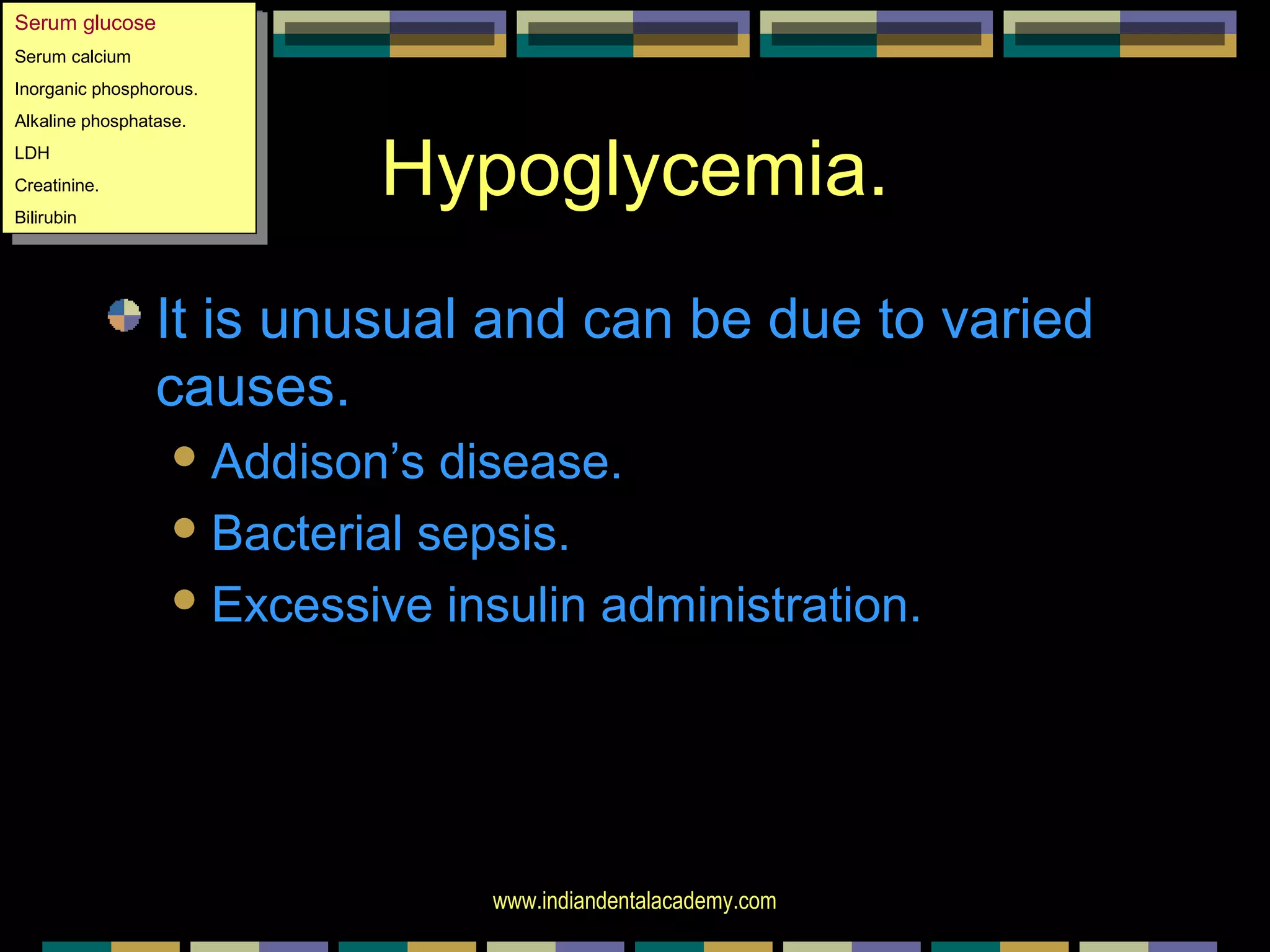This document focuses on the medical evaluation and treatment planning for implant patients, emphasizing the importance of a comprehensive assessment that includes history, clinical examination, and diagnostic imaging. It outlines key factors such as medical history, psychological and social impacts, vital signs, laboratory evaluations, and specific tests to ensure patient safety and successful implant integration. Additionally, it highlights the significance of identifying undiagnosed systemic diseases and bleeding disorders that may affect surgical outcomes.































































































































































![www.indiandentalacademy.com
Persons at risk
Thin
Postmenopausal.
Caucasian woman with history of poor dietary
intake.
Cigarette smoking
British or north European ancestry.
Estrogen replacement therapy [ERT]
Premarin can halt or retard severe bone
demineralization caused by osteoporosis.
Can reduce fractures by about 50% compared with
fracture rate of untreated woman.
OsteoporosisOsteoporosis](https://image.slidesharecdn.com/diagnosisandtreatmentplanninginimplants1-160725091735/75/Diagnosis-and-treatment-planning-in-implants-1-160-2048.jpg)




































